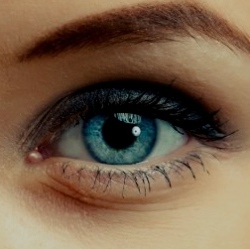
Vision loss due to glaucoma or nerve damage is generally considered irreversible. Now a trial demonstrates vision improvement in partially blind patients after 10 days of transorbital alternating current stimulation (ACS).
In addition to activation of their residual vision, patients also experienced improvement in vision-related quality of life such as acuity, reading, mobility or orientation. The results are reported in PLOS ONE.
"ACS treatment is a safe and effective means to partially restore vision after optic nerve damage probably by modulating brain plasticity, re-synchronizing brain networks, which were desynchronized by vision loss. This class 1 evidence is the first ever large-scale multi-center clinical trial in the field of non-invasive brain modulation using electric currents and suggests that visual fields can be improved in a clinically meaningful way," commented lead investigator Bernhard A. Sabel, PhD, of the Institute of Medical Psychology, Medical Faculty, Otto-von-Guericke University of Magdeburg (Germany).
In a study conducted at three German clinical centers (University of Göttingen, Charité Berlin, and University of Magdeburg), 82 patients were enrolled in a double-blind, randomized, sham-controlled clinical trial, 33 with visual deficits caused by glaucoma and 32 with anterior ischemic optic neuropathy caused by inflammation, optic nerve compression (due to tumors or intracranial hemorrhage), congenital anomalies, or Leber’s hereditary optic neuropathy. Eight patients had more than one cause of optic nerve atrophy.
The groups were randomized so that 45 patients underwent 10 daily applications of ACS for up to 50 minutes per day over a two-week period and 37 patients received sham stimulation. The only difference between groups before treatment was that the stimulation group included more men than the sham group; no other differences were found, including age of the lesion or visual field characteristics. ACS was applied with electrodes on the skin near the eyes. Vision was tested before and 48 hours after completion of treatment, and then again two months later to check if any changes were long-lasting.
Patients receiving ACS showed significantly greater improvements in perceiving objects in the whole visual field than individuals in the sham-treated group. Specifically, when measuring the visual field, a 24% improvement was noted after treatment in the ACS group compared to a 2.5% improvement in the sham group. This was due to significant improvements in the defective visual field sector of 59% in the ACS group and 34% in the sham group which received a minimal stimulation protocol. Further analyses showed improvements in the ACS group at the edges of the visual field. The benefits of stimulation were found to be stable two months later, as the ACS group showed a 25% improvement in the visual field compared to negligible changes (0.28%) in the sham group.
Patient safety measures were maintained at a high level, in line with previous studies. Current flow was assessed using sophisticated computer simulation models. No participants reported discomfort during stimulation, although temporary dizziness and mild headaches were reported in rare cases.
